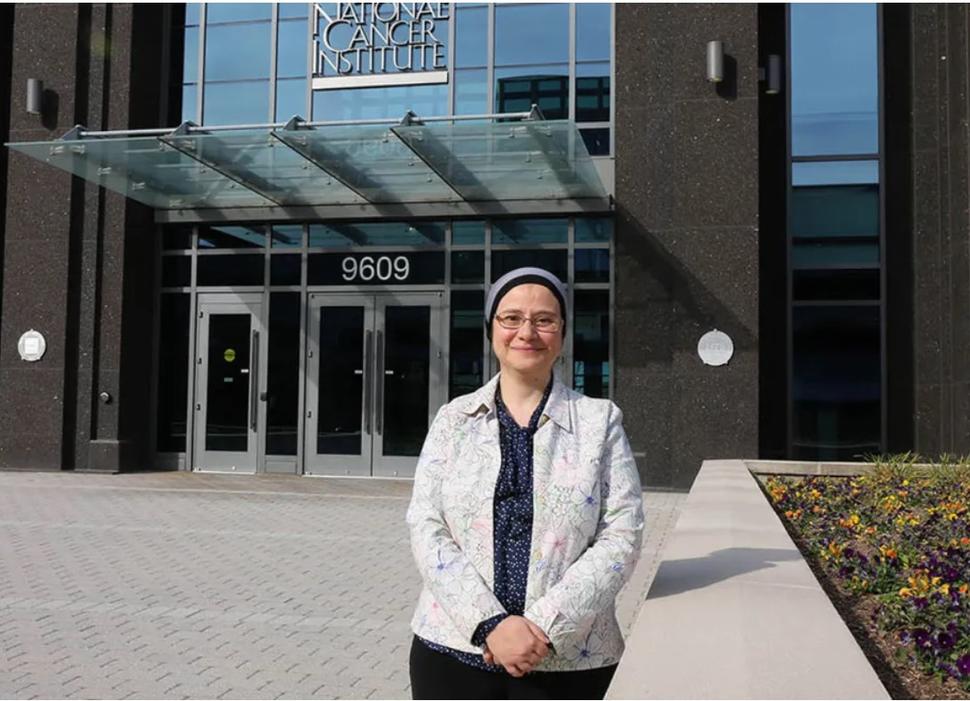NIH Intramural Research Program Features Senior Investigator Shahinaz Gadalla
Shahinaz Gadalla, M.D., Ph.D., senior investigator in the Clinical Genetics Branch, discusses her work on stem cell transplants and the path to improving survival in NIH’s Intramural Research Program news column, Research in Action. An excerpt is presented below.
By the time you finish reading this sentence, two people in the U.S. will find themselves in need of blood cells from another person. Unfortunately, blood transfusions are merely a stop-gap for patients who need blood not because of a surgery or injury but rather due to problems with the 'hematopoietic' stem cells that produce blood cells in the first place.
Cancers like leukemia and other conditions prevent hematopoietic stem cells, located in bone marrow, from making enough new blood cells. The only cure is a hematopoietic stem cell transplant (HSCT), which involves destroying a patient’s own hematopoietic stem cells with radiation and chemotherapy before replacing them with cells from a healthy donor. However, regenerating a patient’s blood using someone else’s stem cells is a risky undertaking.
“Transplantation has definitely improved with time, but still a lot of patients die after this procedure,” says Dr. Shahinaz Gadalla, an IRP epidemiologist working to improve the outcomes for HSCT recipients. “We still have an average five-year survival after these procedures of 50 or 60 percent, so we still have a lot to do.” [...]
Carefully selecting stem cell donors can lower the risk for graft-versus-host disease, which reduces the need for drugs that inhibit the immune system and leaves patients better able to fight off infections. Currently, donor selection depends mostly on matching donors and recipients based on genetic markers called human leukocyte antigens, as well as choosing younger donors in general. However, Dr. Gadalla’s research is showing that the biological age of a donor’s cells may be a more important factor to consider than his or her ‘chronological’ age in years.
Read the full article on the NIH Intramural Research Program website.
